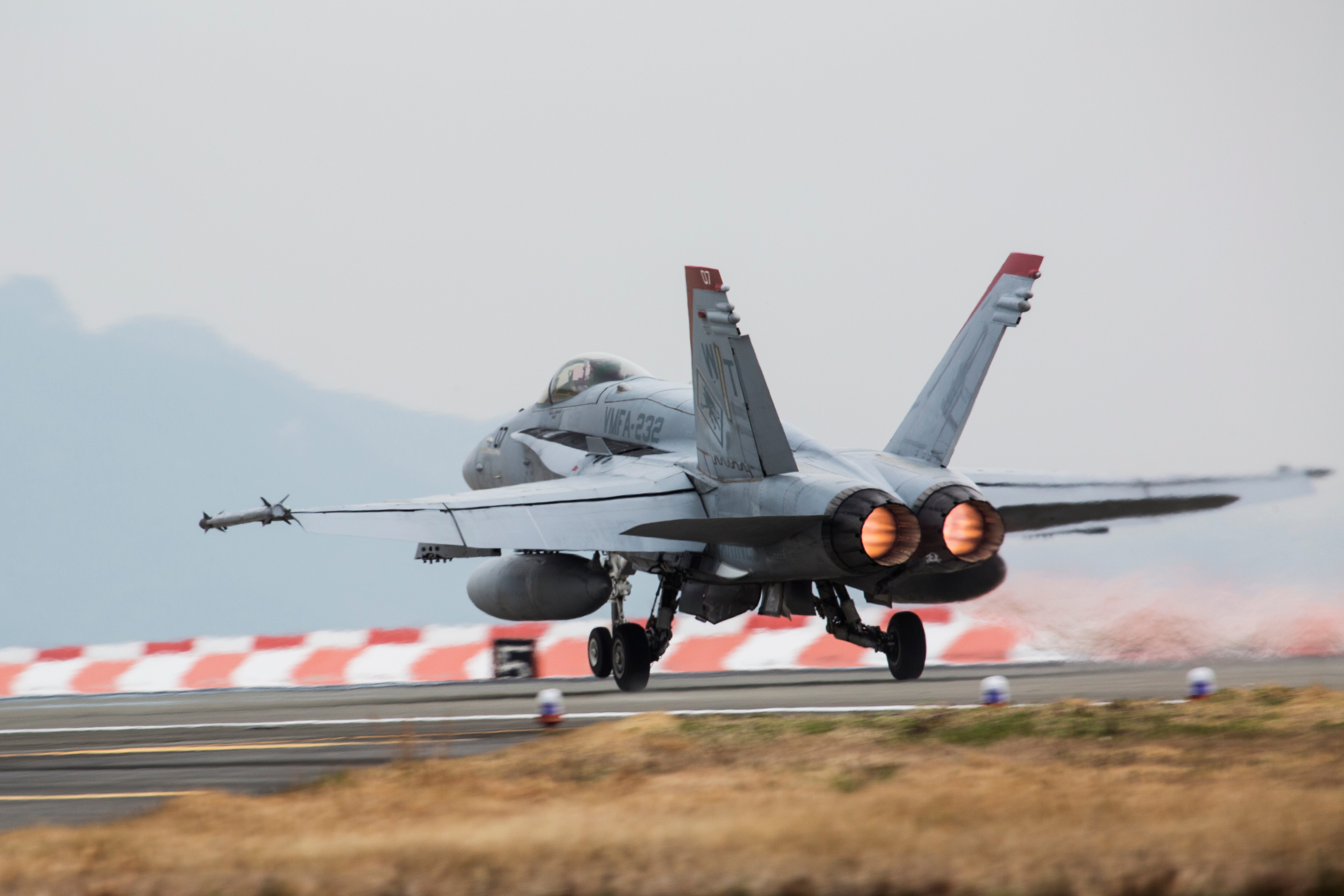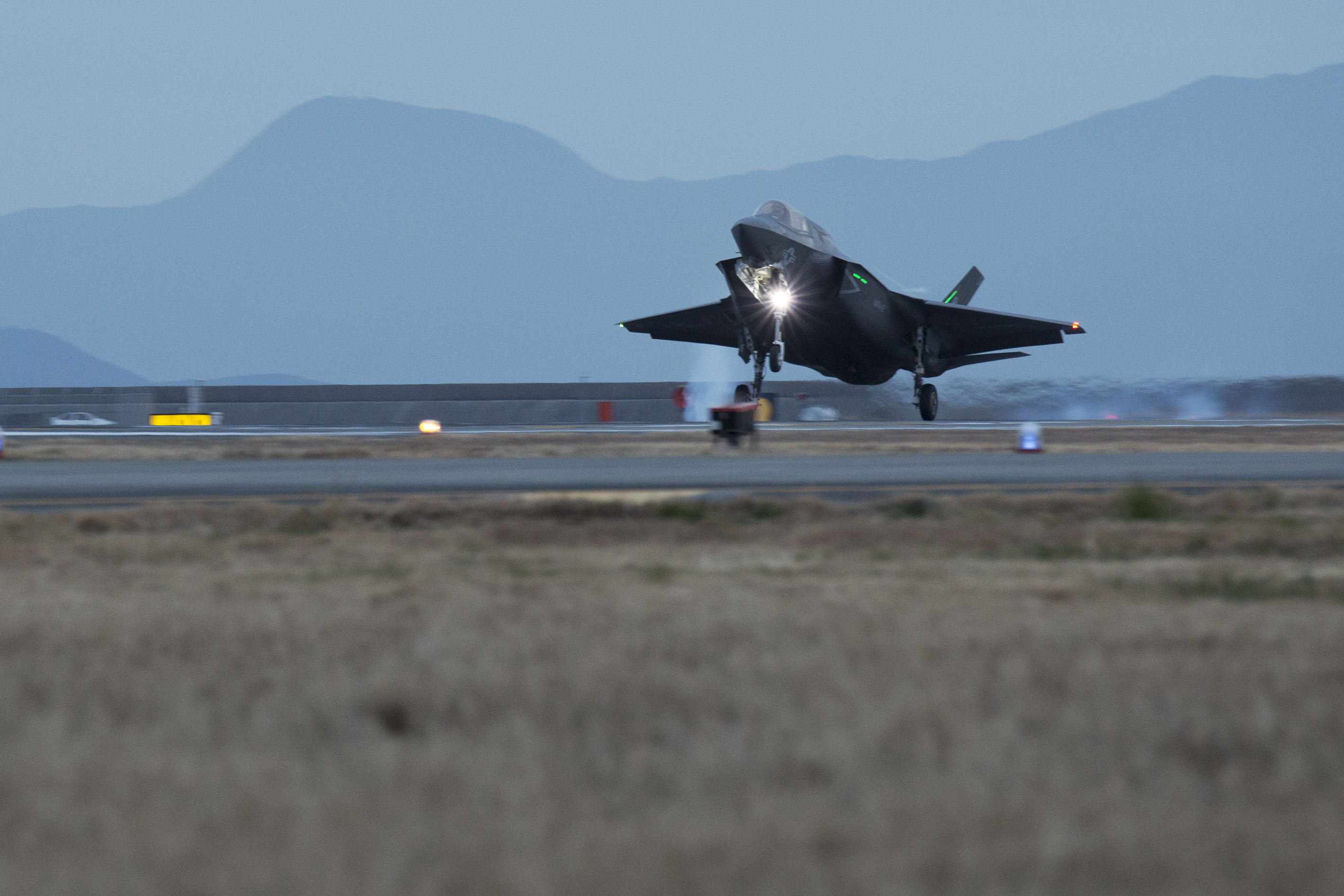
WASHINGTON, D.C. — The Marine Corps could save about a billion dollars, reduce risk for pilots seeing too few flight hours each month and bring additional high-end capability to the fleet if the service were able to buy its F-35B and C Joint Strike Fighters at a faster pace, the deputy commandant for aviation said on Tuesday.
Lt. Gen. Jon Davis said at a House Armed Services tactical air and land subcommittee hearing the Marine Corps ought to be buying several more airplanes a year than is currently in the Pentagon budget, to help move to the new planes faster and retire legacy F/A-18 Hornets – which are struggling to get flight-ready in the first place and then more often than not break after just one sortie.
“That’s the number-one thing I could ask from this committee is to keep that recapitalization on track, to get us into those next-generation strike fighters as soon as we can,” Davis told lawmakers.
Davis and other Marine Corps officials have long called the current F-35B acquisition rate “anemic.” Current plans call for the Marines buying 16, 20, 20, 20 and 21 F-35Bs a year from Fiscal Year 2017 to 2021. Davis said he needs to boost that to 19, 23, 23, 23 and 30.
That higher rate, he told the subcommittee, “allows me to get out of F-18 – vice trying to take that (Hornet fleet) to 2030, push that left to 2025, 2026. If there’s one thing I could ask on the TACAIR side for the United States Marine Corps, besides funding our enabler accounts, would be those new airplanes. That would help us the most.”
Davis said he asked for the three additional planes for 2017, but they didn’t make it through the Pentagon-level review and into the final budget request.
“The F-18s I’m flying today, they’ve got a 55-percent break rate – so that means they’re up in the morning, they go off on that first sortie of the day, they come back and they’re down,” he said, explaining the need to hurry and replace them.
“So usually we got two or three sorties out of those airplanes back in the day; we can’t do that right now. These are tried and true war dogs, they’re great airplanes, but they’re tired.”

The maintenance challenges with the legacy Hornets affect the service in a variety of ways, but Davis told USNI News after the hearing that there’s a major fiscal cost to keeping the Hornets through 2030.
“I can save a billion dollars in [operations and maintenance] by getting out of F-18 early” if he could boost the F-35 ramp rate to the ideal rate he outlined to the committee, he said.
“You heard me talk about that ramp rate – 19, 23, 23, 23, 30, 37 and 23 (a year), and then you’re in your pipe and attrition airplanes,” he said. Whereas that current plan would keep Hornets in service until 2030, “if I stood up all my squadrons by 2025, 2026, I’m out of Harrier, I’m out of Hornet, I’m flying new airplanes, new metal. That drives cost out, and also drives high-capability in.”
Asked what the greatest risk was in the 2017 Marine Aviation Plan, released on Tuesday, Davis again came back to the F-35 procurement rate.
“I think my number-one risk is a slower ramp than I‘ve got right now, and then I’ve got to continue to fly legacy planes longer, in particular the F-18,” he said, which could happen if the Marine Corps continues to see cuts, either during the internal Pentagon budgeting process or from Congress, due to ongoing defense spending caps.
“It’s been a great airplane for us … but it’s time to move on. The Navy’s moving on, and as they go with F-18 we go with F-18. So I don’t really want to be left out in the end with I’m the only one operating the airplane. They were going to fly them in the reserves until 2034, they might try to move that left. I don’t want to be caught out with maintaining the only old F-18s in the nation.”
One solution to get away from Hornets faster, regardless of F-35 procurement rates, is to prioritize transitioning Hornet squadrons to the F-35 ahead of AV-8B Harrier squadrons. Davis previously told USNI News that the squadron transition plan could be changed if Hornet readiness problems persisted and the Harriers held up – and with that appearing to be the case, he told USNI News today that the next five squadrons to transition would probably be Hornet squadrons, compared to the original plan of three more Hornet squadrons and then some Harrier squadrons.

VMFA-122 is starting to transition now and will be followed by VMFA-314 and VMFA-225, “and then TBD – my sense is, if I was telling you now, the next two would be F-18 squadrons. You’ve got to keep the Harriers sound, keep the spare parts, and we’ve been doing a good job with that. But I think the next five will probably be F-18, certainly the next three,” he said.
For Davis, the effect of keeping the Hornets in the fleet is more than just fiscal – lives are on the line.
Due to so few planes being ready to fly – only 146 of 326 tactical airplanes can fly today, he said, with the bulk of the problem being in the Hornet fleet – Hornet pilots only flew 9.1 hours last month. They should be flying at least 16 hours a month, with the “tactical hard deck” – the level where pilots can keep their qualifications – set at 11 hours a month.
“I worry about the F-18s,” he told the committee when asked about his pilots being ready for a high-end fight today.
“I think at the higher-end threat we could have a hard time being successful. We’ll still go fight because we like to fight, we like to do what we have to do. But bottom line, I think we might have less success, we might have more losses. We’ll go … but I think we could have some additional losses.”
He told USNI News after the hearing that recent airplane mishaps – major incidents resulting in death or injury, and the loss of or significant damage to a plane – have not been caused by the material condition of the plane, but some have been related to pilot inexperience.
“To be very honest with you guys, we haven’t crashed any because of a material problem, but for low readiness, we had one mishap at Twentynine Palms where a pilot landed between the runway and the taxiway at night. That’s not supposed to happen, but it did, so when you do the forensics and the why, he hadn’t flown a lot,” Davis explained.
“Other guys in the squadron were flying, so there were decisions about how we keep track of our young guys and young women who are flying airplanes. So I think the bottom line is, as we work our way through and work ourselves out of this readiness hole, not only we have good airplanes, we’ve got to make good decisions about how we fly them.”
He said the pilot involved in that crash is back flying Hornets but under a more structured program that takes into account more hazardous flight conditions such as weather, night-time and other factors. Davis said the Marine Corps was considering what “box,” or set of conditions, young pilots should be flying in, given the current inability to give them more practice.
Asked if the service would formally change how young pilots would focus their limited time in the air, if only allowed nine hours of flight a month, Davis told USNI News, “I have every intention in the time I have left to fix the nine hours. And part of that is, if I can take three squadrons down quicker (and transition to F-35), I’m going to have more up F-18s to go put the other remaining pilots into. So that’s the strategy in that – let’s collapse the pool of really good airplanes that we have, high-reliability airplanes, maybe lower flight hour airplanes … to put those in the hands of our young aviators.”





